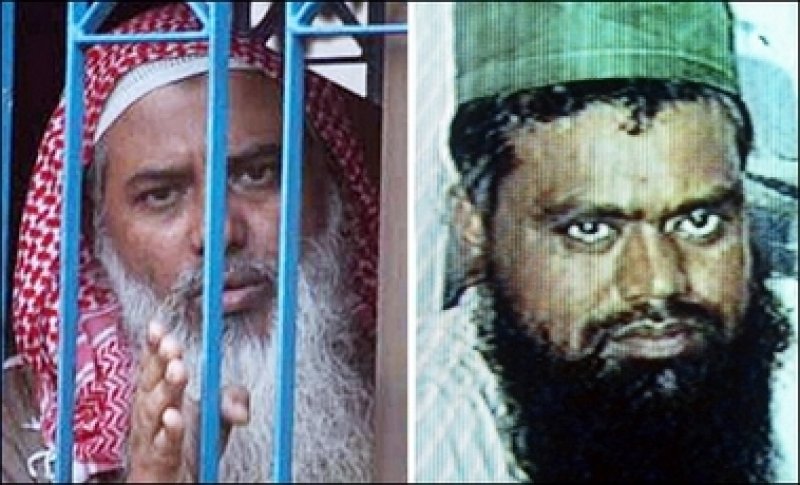The ideological roots of the Jama’atul Mujahideen Bangladesh (Assembly of Mujahideen) are deeply embedded in Salafi-Jihadist thought, influenced by global movements like the Muslim Brotherhood and al-Qaeda, as well as local Islamist groups like Jamaat-e-Islami and the Ahle Hadith movement.
Long article: History of Jamaat-linked JMB’s bloody jihad
Its ideology rejects secularism, pluralism, and Western influences, advocating for a strict Islamic state through armed jihad. The group’s connections to madrasas, training camps, and political support from the BNP-Jamaat government during the early 2000s further shaped its extremist outlook, targeting a wide range of perceived enemies, from religious minorities to secular institutions and cultural practices. This combination of local and global Islamist influences underscores JMB’s role as a significant militant force in Bangladesh’s history of extremism.
Islamist extremism and jihadist ideology
- Core Ideology: JMB is rooted in a radical Islamist ideology that seeks to establish Sharia law in Bangladesh. The group’s name, JMB, reflects its commitment to armed jihad (holy war) as a means to achieve its goals. The JMB’s 2005 bomb attacks across 63 districts, demanding the imposition of Sharia law, indicate their ideological drive for an Islamic state.
- Influence of Global Jihadist Movements: JMB draws inspiration from transnational jihadist ideologies, particularly those of al-Qaeda and the Muslim Brotherhood (Ikhwanul Muslimeen). JMB founder Shaykh Abdur Rahman studied at the Islamic University of Madinah and maintained contacts with the Egypt-based Muslim Brotherhood while in Saudi Arabia. This suggests a connection to global Salafi-Jihadist thought, which emphasizes strict adherence to a literal interpretation of Islamic texts and the use of violence to enforce Islamic governance.
- Links to Other Militant Groups: JMB’s ideological framework aligns with other South Asian and global militant groups like Harkat-ul-Jihad al-Islami (HuJI-B), Lashkar-e-Taiba, and al-Qaeda in the Indian Subcontinent (AQIS). The JMB members later joined AQIS and ISIS, sharing similar targets (e.g., Shia, Ahmadiyya, Hindus, Christians, and secular institutions) and methods (e.g., suicide bombings and targeted assassinations).
Connection to Jamaat-e-Islami and Ahle Hadith
- Jamaat-e-Islami Influence: Shaykh Abdur Rahman, JMB’s founder, was an influential leader in Jamaat-e-Islami during his time in Saudi Arabia. While he later left Jamaat to form JMB, the ideological overlap is evident—both groups advocate for Islamic governance, though Jamaat-e-Islami operates within the political sphere, while JMB pursues violent jihad. The web result from Wikipedia suggests that some speculate JMB may have been a proxy for Jamaat-e-Islami to push a more radical agenda, making Jamaat-e-Islami appear moderate by comparison.
- Ahle Hadith Connection: The JMB’s founder is a follower of the Ahle Hadith movement, a puritanical Islamic sect in South Asia that emphasizes a strict, literal interpretation of the Quran and Hadith, rejecting many traditional Islamic practices. His father, Abdullah Ibne Fazal, was an Ahle Hadith leader and a member of the Al-Badr force during Bangladesh’s Liberation War, indicating a family and ideological lineage rooted in this conservative strain of Islam. This aligns JMB with a Salafi-like ideology, which often underpins jihadist movements.
Anti-secularism and anti-western sentiment
- JMB’s ideology explicitly opposes secularism, liberalism, and Western influences, as seen in its attacks on secular writers, publishers, NGO offices (e.g., BRAC, Grameen Bank, Proshika), courts, police, and cultural events like cinema halls and Jatra performances. The JMB targeted individuals and institutions perceived as “anti-Islamic,” including secularists, Hindus, Christians, and Sufi shrines, reflecting a rejection of Bangladesh’s pluralistic and syncretic cultural heritage in favor of a rigid, puritanical Islamic vision.
- The group’s operations, such as the 2016 Holey Artisan Bakery attack in Gulshan (targeting foreigners and upscale areas), also suggest an anti-Western sentiment, consistent with global jihadist narratives against perceived Western imperialism and cultural influence.
Role of madrasas and training camps
- The JMB’s ideology was propagated and sustained through madrasas and training camps. Many JMB members, including those who later joined ISIS, were madrasa students, suggesting that these religious schools served as recruitment and indoctrination hubs. The group conducted training at camps like those of the Rohingya Solidarity Organization (RSO) in Naikhongchhari, Bandarban, focusing on bomb-making and armed warfare, further embedding its jihadist ideology in practical militancy.
Historical context and political support
- JMB’s ideological roots were nurtured during a period of political instability and alleged support from the BNP-Jamaat coalition government (2001–2006). JMB operated with the backing of MPs, ministers, police, and the Rapid Action Battalion (RAB), suggesting that the political environment under BNP-Jamaat, which included Islamist factions, provided a fertile ground for JMB’s radical ideology to flourish. This political patronage likely reinforced JMB’s belief in the necessity of violent jihad to counter secular and opposing political forces, such as the Awami League and leftist groups.


Leave a Reply
You must be logged in to post a comment.